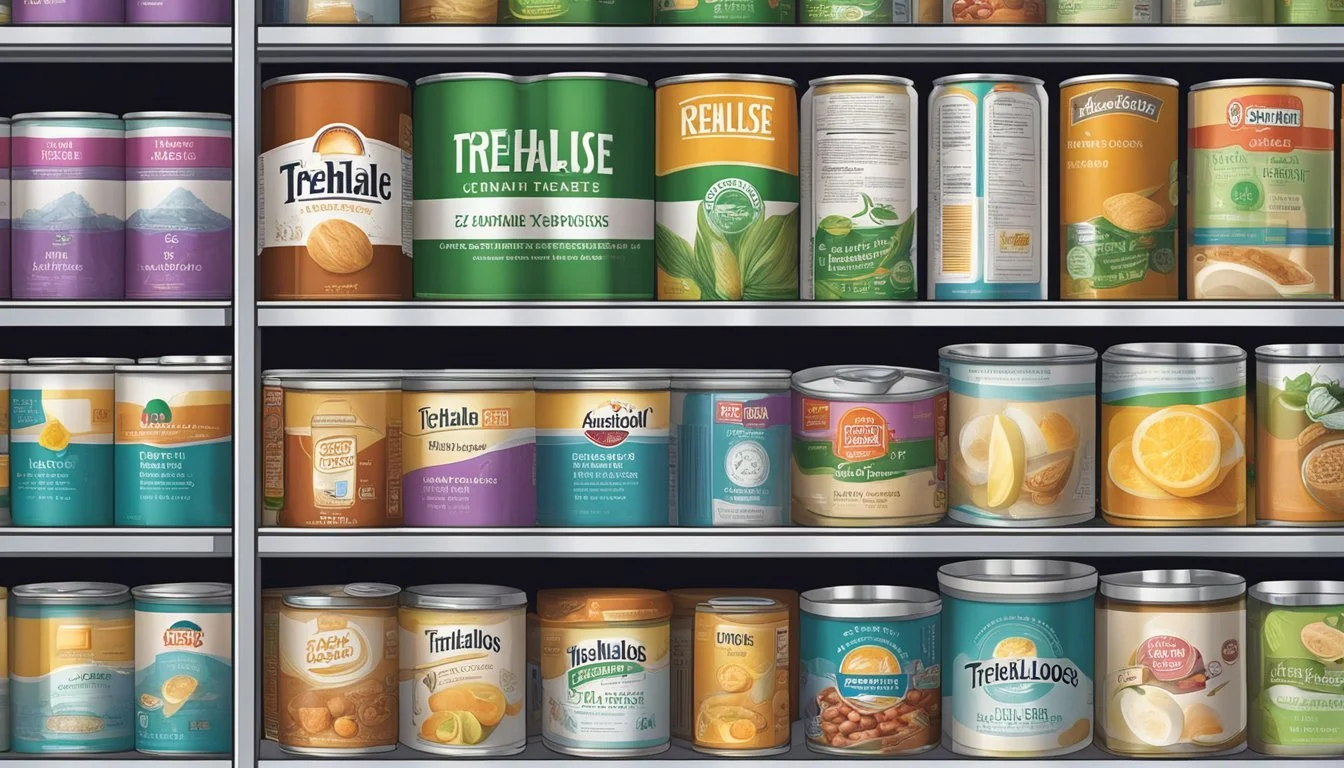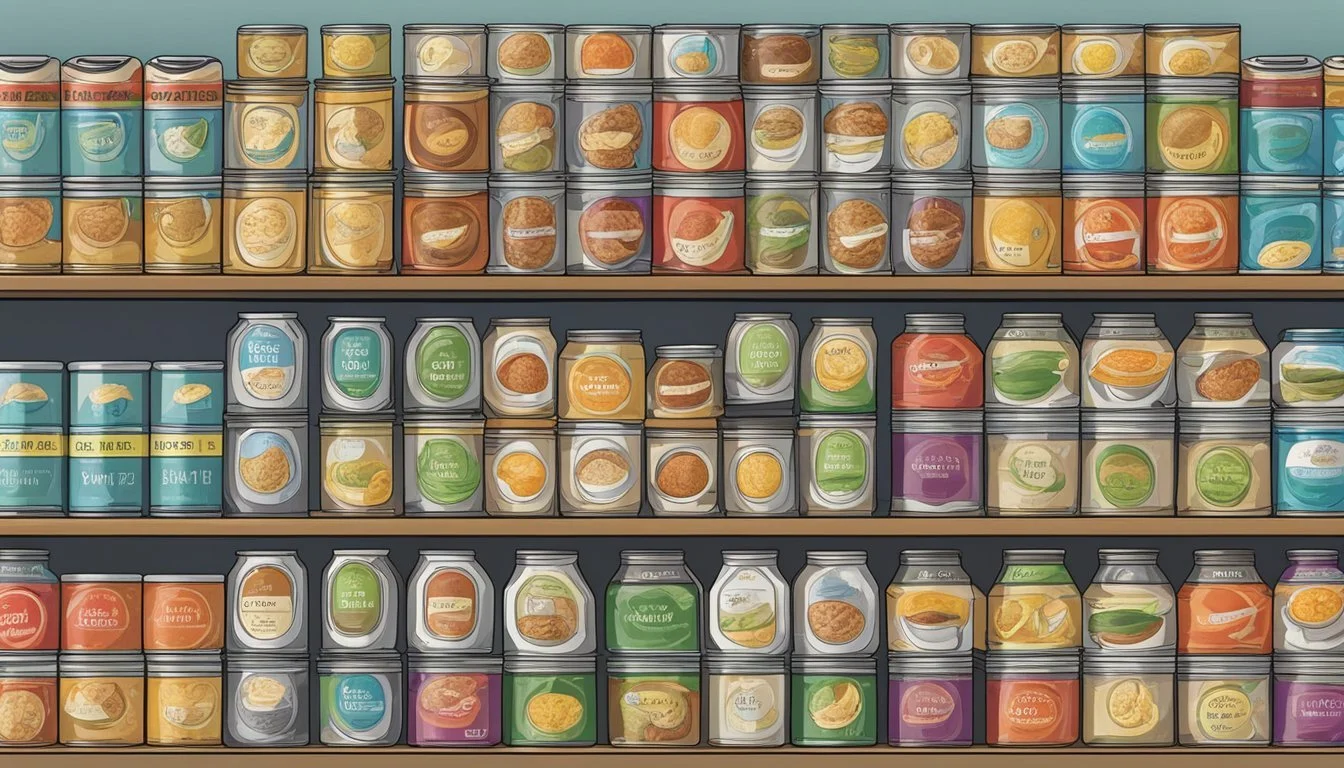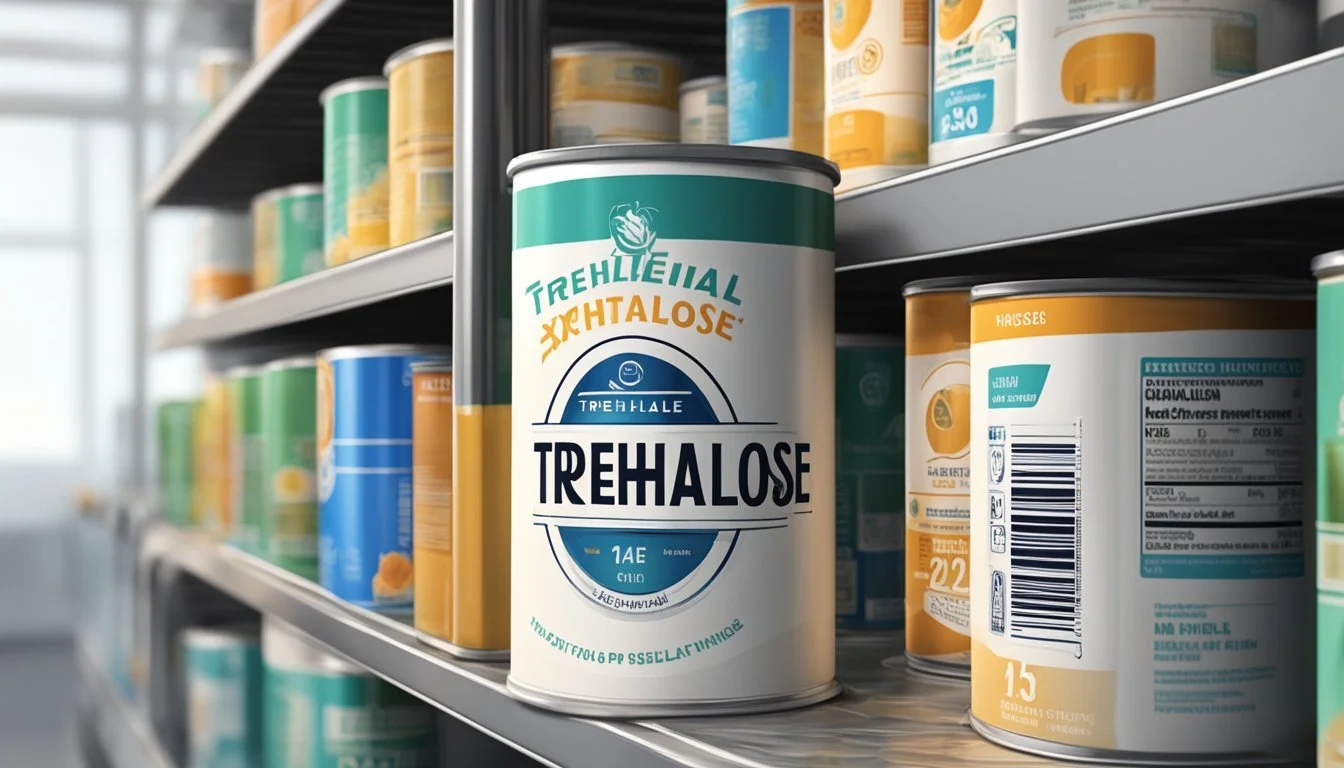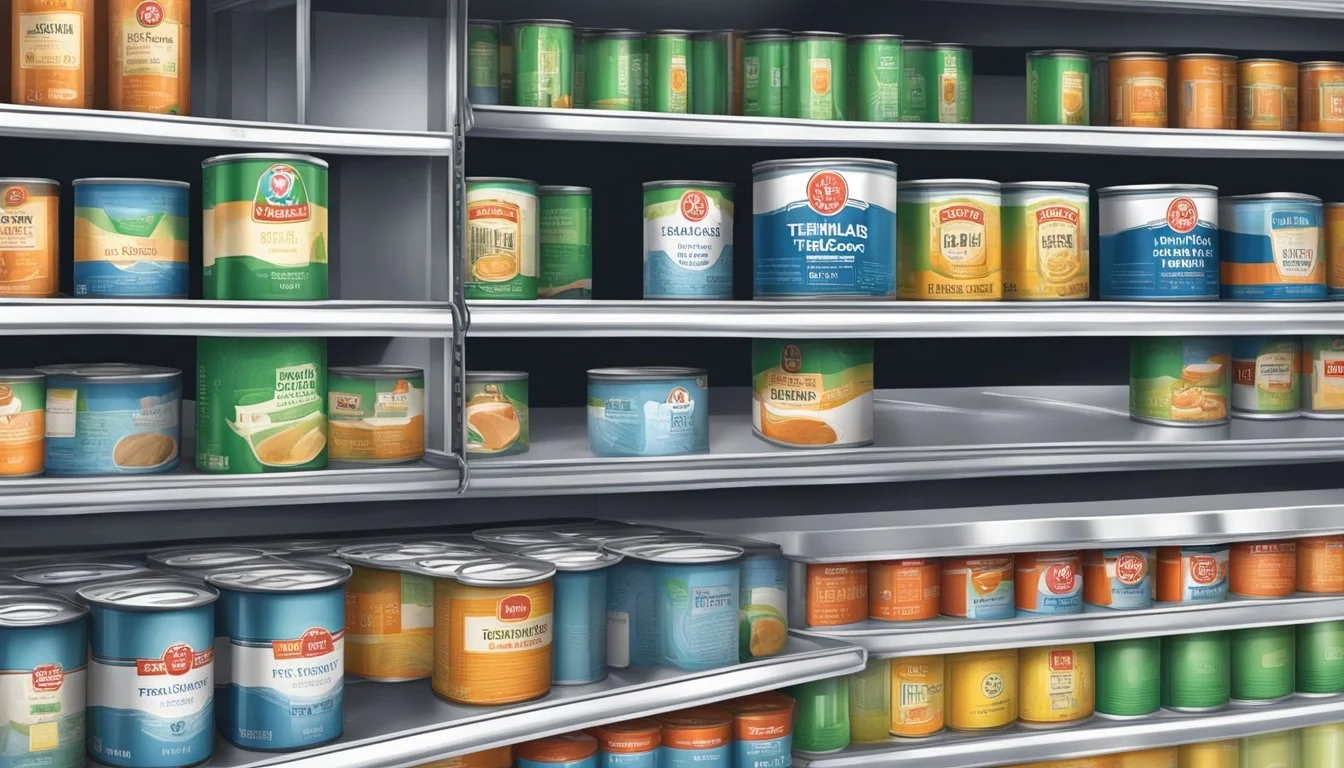How Long Does Canned Trehalose Last?
Shelf Life and Storage Insights
Canned trehalose is a sugar that comes with a stable shelf life, similar to other sugars in properly preserved forms. As a disaccharide with commercial use in various food products, trehalose acts as a sweetener and stabilizer. Due to its less reactive nature compared to simple sugars, trehalose maintains its integrity over extended periods when canned, ensuring that its potential health benefits and taste are preserved.
Understanding the shelf life of canned goods is essential, as it ensures food safety and quality. While high-acid foods typically maintain quality for about 18 months, low-acid items can last from two to five years if stored correctly. This guideline ensures that products like canned trehalose can be used without concerns about spoilage for a considerable length of time, provided the storage conditions are adequate, and the cans remain undamaged.
Consumers should check for any signs of can deterioration, such as rust or pitting, to validate the usability of canned trehalose. Although canned goods have an impressive span of safe consumption, the storage environment plays a critical role in the longevity of the product. Keeping canned trehalose in a cool, dark place away from extreme temperature fluctuations will help in maintaining its shelf life and quality.
Basics of Trehalose and Canning
Trehalose is a natural sugar known for its preservation qualities, often added to foods as a stabilizer. When it comes to home canning, this disaccharide plays a role in maintaining the quality and stability of canned goods. Canning is a method used to extend the shelf life of food, including items sweetened with trehalose, by processing them in sealed containers, such as Ball or Mason jars.
Shelf-stable Foods: Home canned goods containing trehalose are considered shelf-stable. This means they can be stored safely at room temperature until opened. The addition of trehalose can aid in the retention of texture and flavor, enhancing the food preservation process.
Home Canning Process:
Cleanliness: Ensuring jars and lids are properly sterilized is critical.
Filling: Jars should be filled with prepared foods and leave appropriate headspace.
Sealing: The use of reliable sealing methods, like utilizing Ball or Mason jars, is indispensable for ensuring food safety.
Processing: Using a water bath or pressure canner, jars are processed to eliminate harmful microorganisms.
Factors Affecting Longevity: The shelf life of canned goods, trehalose included, can be influenced by several factors:
Storage Conditions: Cool, dark, and dry storage conditions are ideal.
Acidity: Foods with higher acidity levels tend to have a shorter shelf life.
Seal Integrity: A perfect seal is necessary to prevent spoilage.
It’s important for those engaging in home canning to follow up-to-date safety guidelines, as improper canning can lead to foodborne illnesses. While trehalose can help protect the integrity of preserved foods, it does not replace proper canning techniques and safety practices.
Understanding Trehalose
Trehalose is a disaccharide formed by two glucose molecules connected by an alpha-alpha-1,1-glycosidic bond. Its unique properties make it an effective stabilizer and preservative, thereby endowing it with a crucial role in various food and pharmaceutical industries. Trehalose occurs naturally in many organisms, including plants, fungi, invertebrates, and some bacteria.
Nutritional Value and Impact on Health:
Trehalose is digestible and provides a moderate amount of calories, similar to other sugars. While it does not supply proteins, vitamins, or minerals, its slow digestion rate leads to a more gradual release of glucose into the bloodstream.
Stability and Shelf Life:
It is renowned for its high level of stability, which contributes to the longevity of products containing it. Trehalose can be stored for extended periods without degradation, underlining its suitability in shelf-stable foods and its ability to maintain the quality of canned goods.
Usage and Safety:
When added to food, trehalose plays the role of a sweetener and texture enhancer. It is considered safe for consumption and has been approved by various food safety authorities. In the context of canned foods containing trehalose, it helps maintain texture and flavor over time.
Trehalose in the Diet:
While trehalose provides energy, its lack of proteins, vitamins, or minerals means that it should not be relied upon to fulfill any specific nutritional requirements. Its role in the diet is primarily as a carbohydrate source, and it should be consumed in moderation within a balanced diet.
General Shelf Life of Canned Foods
The shelf life of canned foods varies depending on their acid content. High-acid foods tend to have a shorter shelf life, while low-acid foods can be stored for a longer period.
High-Acid Foods
High-acid foods include items such as canned tomatoes, fruits, and sauerkraut. Their best quality is maintained for up to 18 months. The acidity in these foods can cause changes in texture and flavor over time.
Canned tomatoes: 12-18 months
Fruits: 12-18 months
Sauerkraut: 12-18 months
Low-Acid Foods
Low-acid foods encompass a larger group that includes vegetables, beans, soups, and meats. These products have a significantly longer shelf life, remaining at peak quality typically for 2 to 5 years.
Vegetables: 2-5 years
Beans: 2-5 years
Soups/Stews: 2-5 years
Meats: 2-5 years
For both categories, it is crucial that cans remain free of damage and are stored properly to ensure the longest shelf life and safety of the contents.
Specifics of Canned Trehalose Shelf Life
Trehalose, considering it is a sugar, typically enjoys a stable shelf life. As a canned product, when stored properly, canned trehalose can retain quality and freshness for an extended period. Unlike some perishable items, trehalose is not prone to quick spoilage because of its sugar structure that makes it less hospitable to microbes.
The expiration date on canned goods often indicates peak quality, rather than safety. The USDA states that canned goods, in general, are safe indefinitely as long as they are not exposed to freezing temperatures or temperatures above 90°F (32°C). For canned trehalose, consumers can expect a shelf-life similar to other canned non-perishable foods. Though no exact timeframe is provided specifically for canned trehalose, it is reasonable to infer its duration mirrors that of similar canned goods.
Type Expected Shelf-life High-acid canned foods 12-18 months Low-acid canned foods 2-5 years
Trehalose would likely fall under the 'low-acid' category, ensuring a longer shelf-life. Any specific labeling provided by the manufacturer could offer guidance on the peak period to use the product for best quality. It is imperative to ensure that the can's integrity remains intact, free from rust, dents, or swelling, to safeguard the trehalose inside against degradation.
In sum, while canned trehalose does not have a unique storage guideline separate from other canned goods, it benefits from the general durability of canned food preservation. Consumers can trust in a multi-year shelf stability when stored in proper conditions, maintaining product quality within the range of its expiration dates.
Factors Influencing Shelf Life
The shelf life of canned trehalose is affected by various tangible factors that ensure its longevity and quality. Proper attention to storage conditions, temperature management, and container integrity can significantly extend the time that this bioactive sugar retains its desirable properties.
Storage Conditions
Storage conditions are paramount in determining the shelf life of canned trehalose. Ensuring that trehalose is kept in a cool, dry place shields it from moisture and direct sunlight, which could otherwise lead to spoilage. It is also beneficial to use vacuum-sealed containers as they prevent oxidation, a process that can degrade trehalose over time.
Temperature Control
Maintaining a consistent temperature between 50-70°F (10-21°C) is crucial for the preservation of canned trehalose. Exposure to extreme temperatures can activate harmful microorganisms and accelerate chemical changes. Consequently, one should store canned goods away from heat sources including stoves and heating vents.
Container Integrity
The shelf life of canned trehalose is directly related to the good condition of the can itself. Any signs of rust, denting, or seam defects can compromise the can's seal, leading to contamination or spoilage. Regularly inspect cans for damage, and store canned goods in a manner that prevents physical harm to ensure their integrity.
Identifying Signs of Spoilage
When dealing with canned goods, such as trehalose, it is critical to recognize signs of spoilage early to ensure food safety. Spoilage can result from various factors, including storage conditions and container integrity, and can compromise the product's safety.
Visual Inspection
One should first examine the trehalose can for any visual abnormalities. Signs of spoilage might manifest as unexpected changes in color, texture, or presence of mold. It is important for the consumer to be aware that any visual deviation from the normal appearance of the canned product may indicate spoilage and potential health risks.
Smell and Taste
Before consuming, smelling the product can be a strong indicator of spoilage. Odors that are off-putting or unusual are clear signs that the trehalose may no longer be safe to consume. Similarly, any taste that seems abnormal compared to previous experiences with the product should be taken seriously as a signal of potential spoilage.
Container Damage
The integrity of the can is paramount to the preservation of trehalose. Consumers should inspect the can for signs of damage, such as:
Rust: which can compromise the seal and introduce contaminants.
Bulging or swelling: often a result of gas produced by bacteria, indicating spoilage.
Dents: especially serious when located along seams, can alter the internal pressure and seal.
Leaking: suggests that the hermetic environment necessary for food safety has been breached.
Examining the canned trehalose for these physical signs of damage can prevent the consumption of spoiled or unsafe food.
Safety Measures and Food Poisoning Prevention
When preserving food, particularly canned goods like trehalose, safety is paramount. To prevent foodborne illnesses, such as botulism, strict standards must be adhered to during both the canning process and after opening.
Preventing Botulism
Botulism, a serious illness caused by the Clostridium botulinum bacteria, is a critical concern with canned foods. These bacteria thrive in low-oxygen environments, which is precisely the environment within a sealed can.
Use proper canning techniques: Ensuring that canned trehalose is processed at a high temperature is essential to destroy botulinum spores.
Inspect cans before use: Consumers should always check for dents, rust, or bulging, which can indicate that the botulism toxin has contaminated the contents.
Proper Handling After Opening
Once a canned product is opened, air enters the container, and the protective seal is broken. At this stage, it is crucial to manage leftovers correctly to prevent bacterial contamination.
Refrigerate leftovers: Opened cans of trehalose should promptly be transferred to airtight containers and refrigerated at 40°F or below. Leftovers should be consumed within 3-4 days to minimize the risk of food poisoning.
Cooking process matters: If repurposing the trehalose for other meals, it should be cooked to an internal temperature of 165°F to ensure any residual bacteria are destroyed.
Remember, while canned trehalose can last a long time on the shelf, once opened, it should be treated with the same care as fresh food to maintain food safety and prevent illness.
Best Before and Expiry Dates
When determining the longevity of canned trehalose, it's essential to distinguish between 'best before' and 'expiry' dates, as these indicators influence both quality and safety.
Understanding Date Labels
Best Before Date: This label refers to the timeframe during which the product maintains its intended quality and flavor. It is not a safety-related deadline but rather a manufacturer's estimate of peak quality.
USD Guidelines: The United States Department of Agriculture (USDA) does not require expiration dates on canned foods. Instead, 'best by' dates are commonly applied.
Shelf Life: Canned trehalose has a long shelf life due to the low water activity in sugars which inhibits microbial growth. Under proper storage conditions, it can typically last well beyond this date.
Expiry Date: In contrast, an expiration date indicates the end of the period during which the item is safe to eat. Note that the term 'expiry' is traditionally associated with perishable items such as meat, dairy, and certain medications, rather than non-perishables like canned trehalose.
Impact on Quality and Safety
Quality: Beyond the 'best before' date, the quality of trehalose—such as its sweetness intensity—might diminish, but it generally remains safe for consumption.
Quality Indicators: Look out for changes in color, texture, or separation of contents, which may affect taste but not necessarily safety.
Safety: The safety of canned trehalose largely depends on can integrity and proper storage.
Can Condition: Ensure cans are free from dents, rust, or swelling, as compromised cans may lead to contamination.
Storage Practices: Store cans in a cool, dry place to prolong shelf life and maintain safety. Keeping the product frozen is unnecessary and not recommended for canned items.
By understanding these labels, consumers can confidently make informed decisions about the consumption of canned products like trehalose based on quality preferences and food safety standards.
Advanced Storage Techniques
When it comes to prolonging the shelf-life of canned trehalose, various advanced storage techniques hold the key to maintaining its quality. Storing at a cool, dry place significantly extends the longevity of this substance. A constant, low temperature, such as that in a refrigerator, is optimal to preserve the integrity of trehalose.
Storage Condition Expected Outcome Refrigeration (0-4°C) Slows down degradation, preserving quality Dry environment Prevents moisture-induced crystallization
Michigan State University research suggests that certain storage methods can significantly impact shelf-life. The addition of stabilizers to trehalose can improve its resilience. For instance, incorporating substances like choline salts in the solution is found to enhance trehalose stability during storage, allowing it to withstand temporary humidity changes which may otherwise compromise integrity.
It's imperative to note, users seeking guidance on storage durations can refer to the FoodKeeper app, which offers detailed advice on food preservation, including sweeteners like trehalose. The app would typically recommend that users store canned products, including trehalose, in a refrigerator to maintain optimal quality over an extended time frame.
Proper storage not only affects the longevity but also retains the functional properties of trehalose. Ensuring that it is kept away from direct sunlight and in an area with stable temperature mitigates the risk of degradation due to environmental factors. Thus, the use of advanced storage techniques can assure consumers that the functional properties of trehalose are preserved for an extended period.









